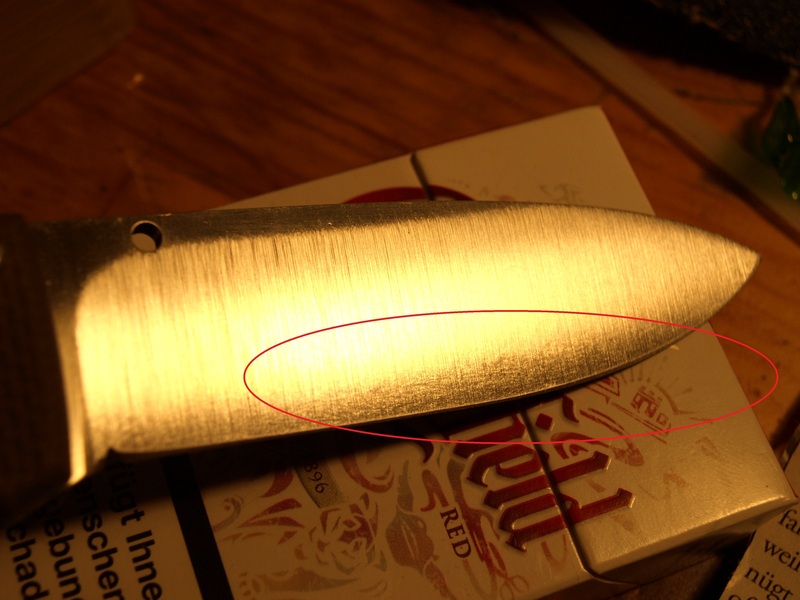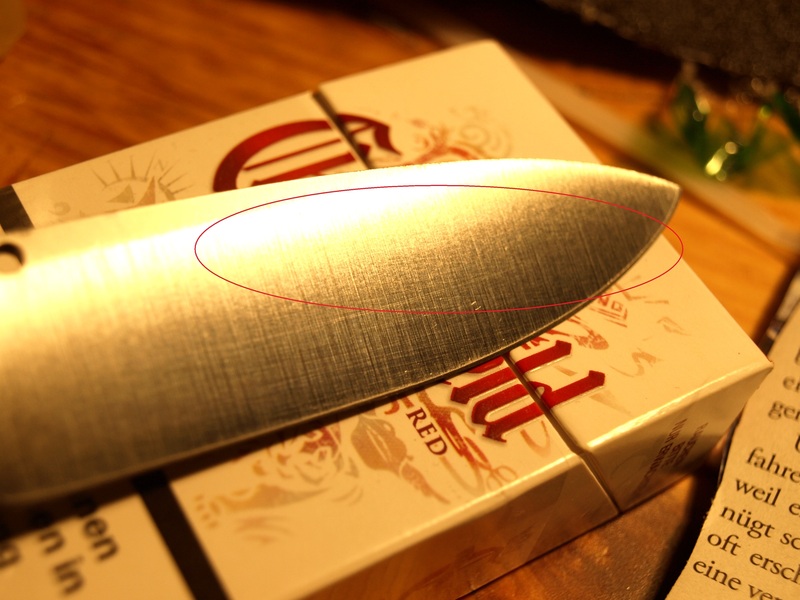I've read a few about rolled stringer before tackling carbide refinement for high alloy ingot steels. While your refering to grain mechanical/roll elongation with different work hardness, so on... These rolled grains are very easily abrade by high speed belt/abrasive cutting mostly perpendicular to them. Unless include with those grain are elements segregation - thus carbide/etc stringers.
IME, my D2/K110 6 thermal cycle ht - sadly there are still a bunch of big carbides. I roughly polished surface with Shapton pro 220 through 5000.

So far, I only experimented around 20+ D2 and a few M2. I didn't really run into extra bad banding as others have, hopefully none of my D2 & M2 stock pile bars come from the last 2% of the ingot pour.
Now instead of using Shapton pro 1K,2K,5K - swap for soft alumina waterstone (such as King). I would get 'orange peel' or carbide haze look. How it looks depend on the height of carbide protruding over the matrix. Those emboss carbides + trough (matrix depression - square edge/crater/rounded) define surface reflectance.
Hand sanding usually works by rounding and or flattening. Rounding when sanding direction is parallel to bands/stringers. Since often abrasives in sand paper still sharp when in use, so protruding carbides can be flatten. However with high VC carbide volume and grit smaller than 12um, well better use diamond/cbn, otherwise task becomes futile (even with hard backing) - VC just dull softer abrasive in 1 or 2 passes.
Cliff Stamp wrote:BluntCut, do you have any references for the carbide argument, I have seen it claimed, but the literature usually notes otherwise and describes it as being due to plastic deformation of the grains which becomes more of an issue with coarse grains and low hardness. See for example "Injection Molding Handbook", D.V. Rosato, Marlene G. Rosato . There are also lots of papers with direct microscopy showing the deformation of large grains as producing the surface irregularity. The reason why it goes away in hand sanding is that the energies are far less severe hence abrasion happens vs passing the yield strength of the grains.


